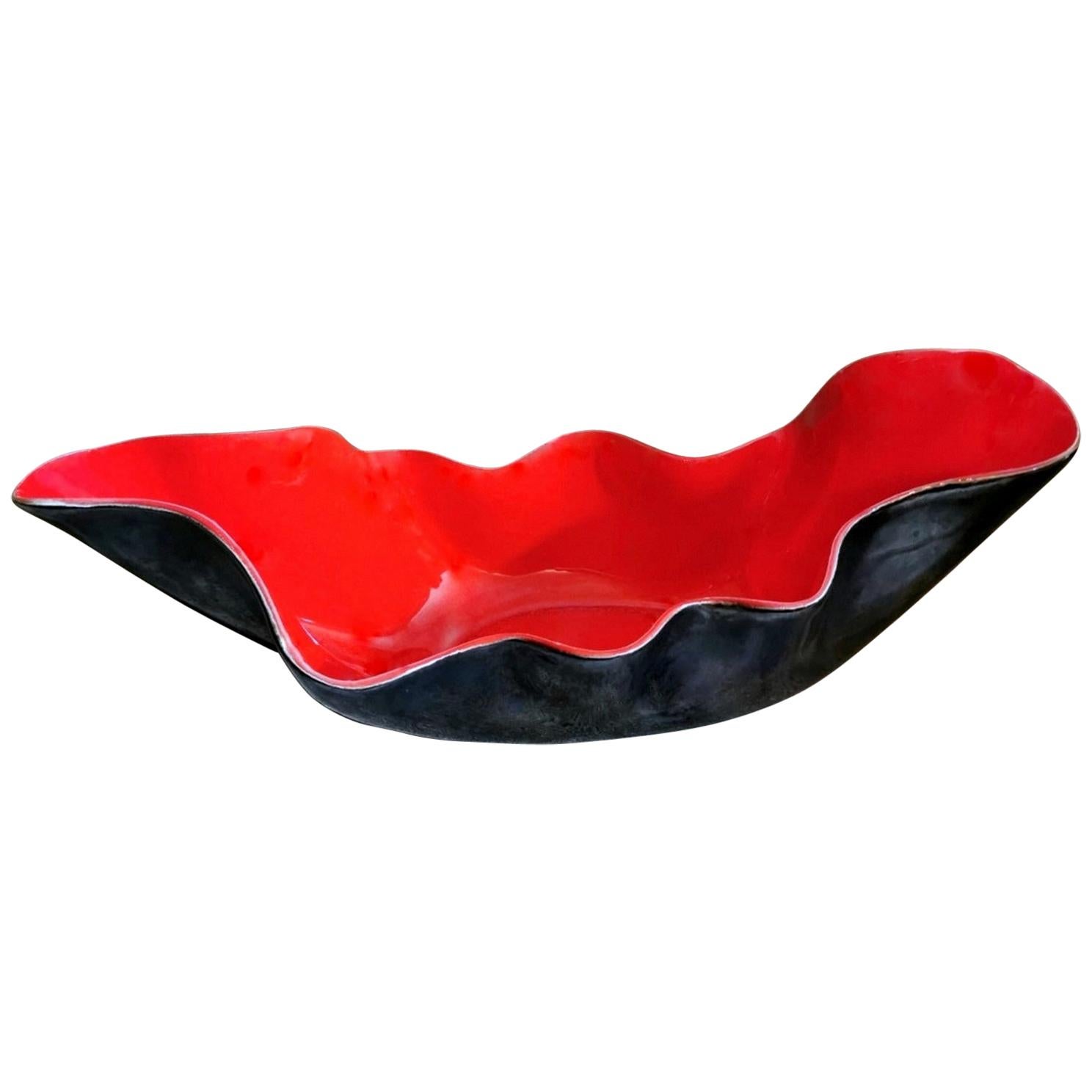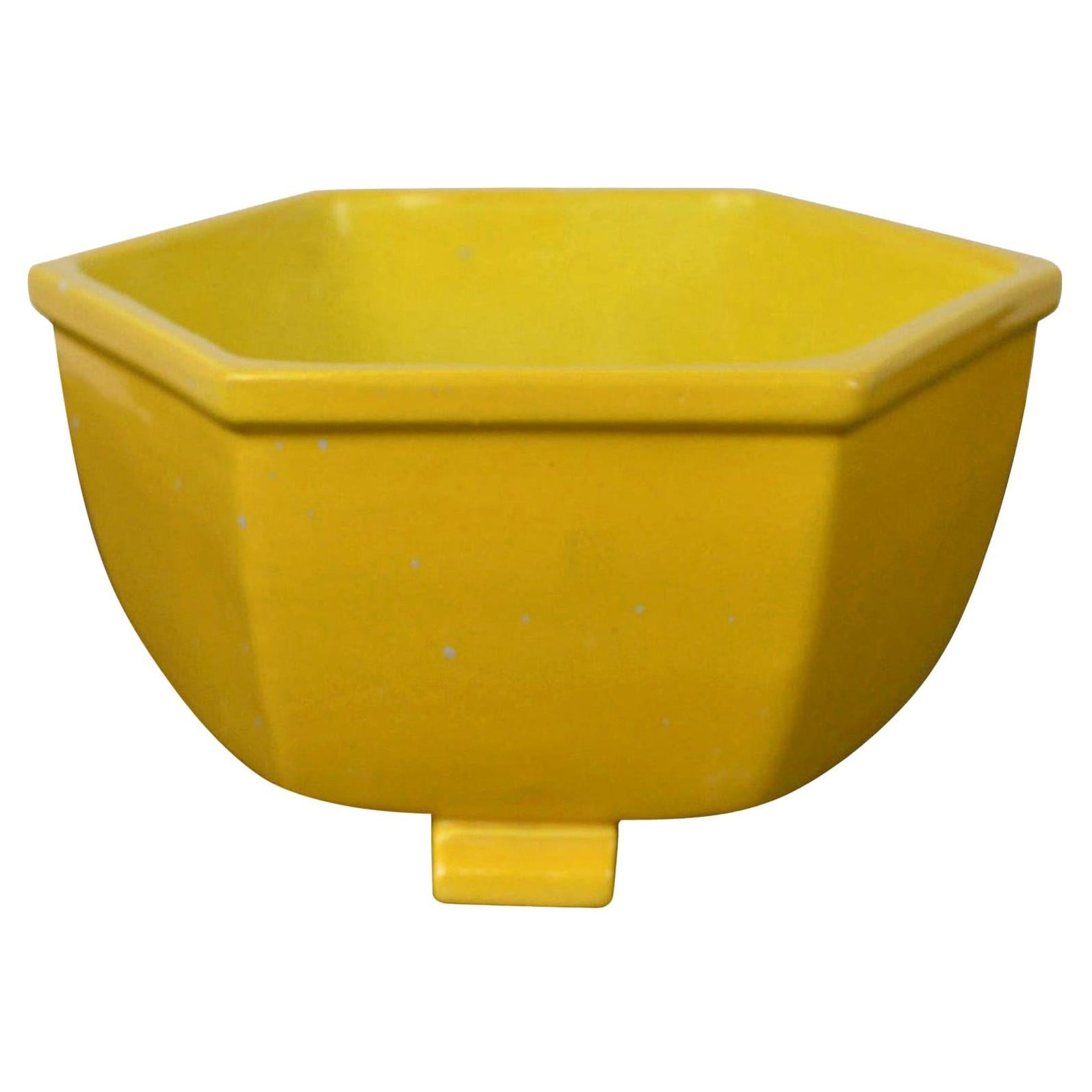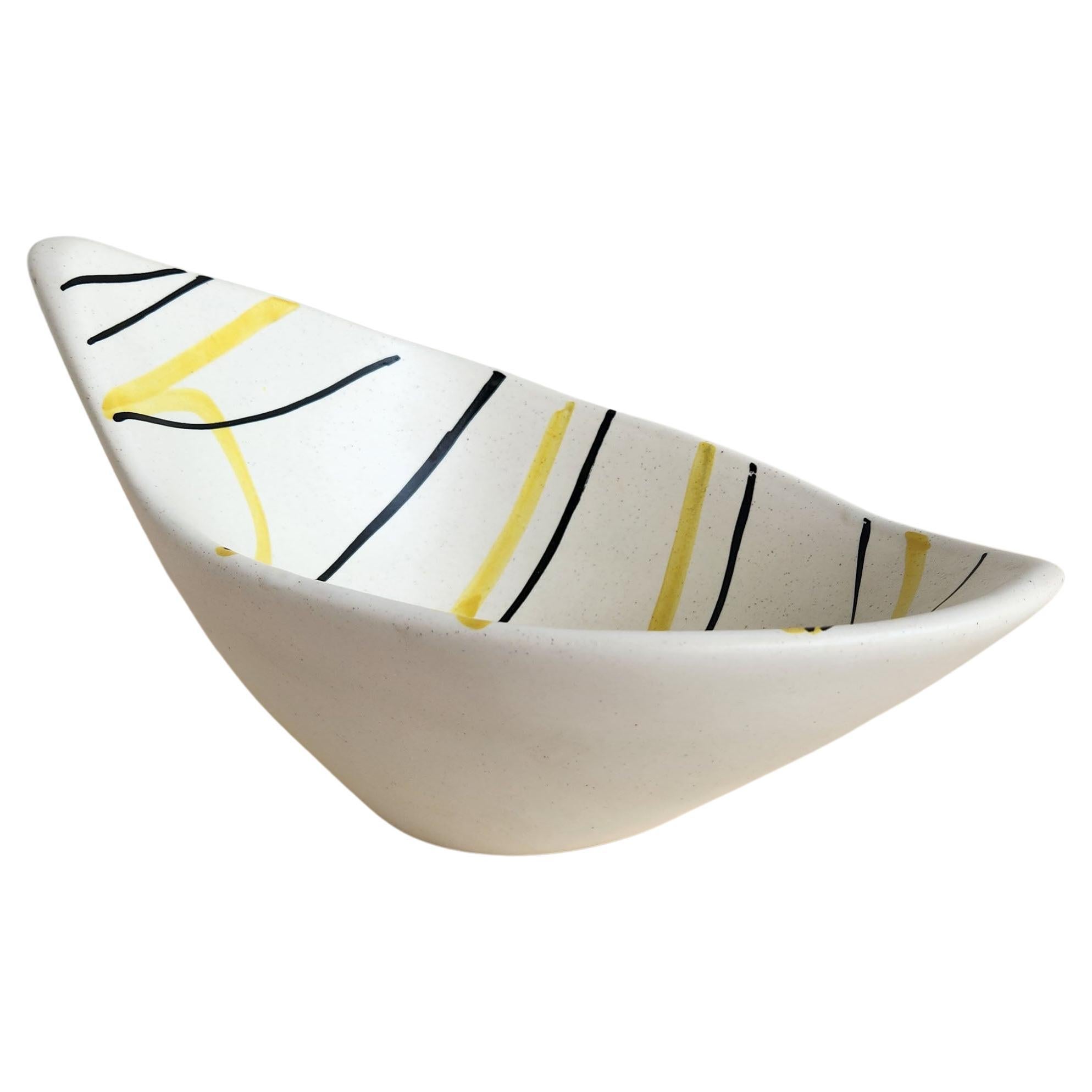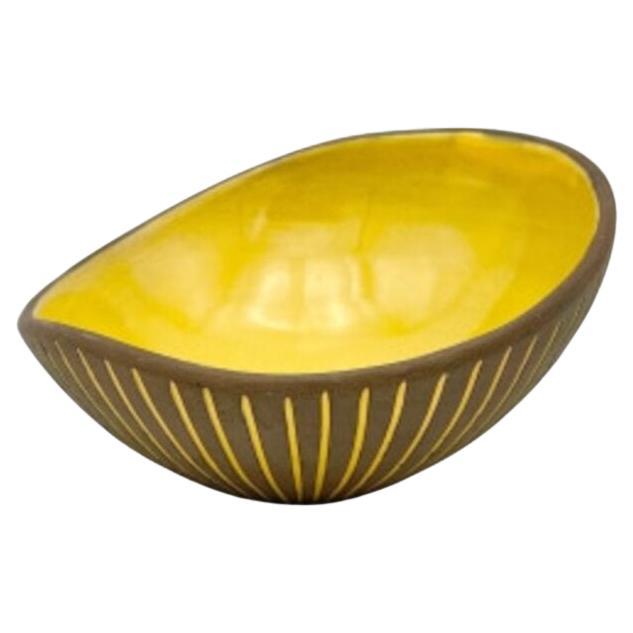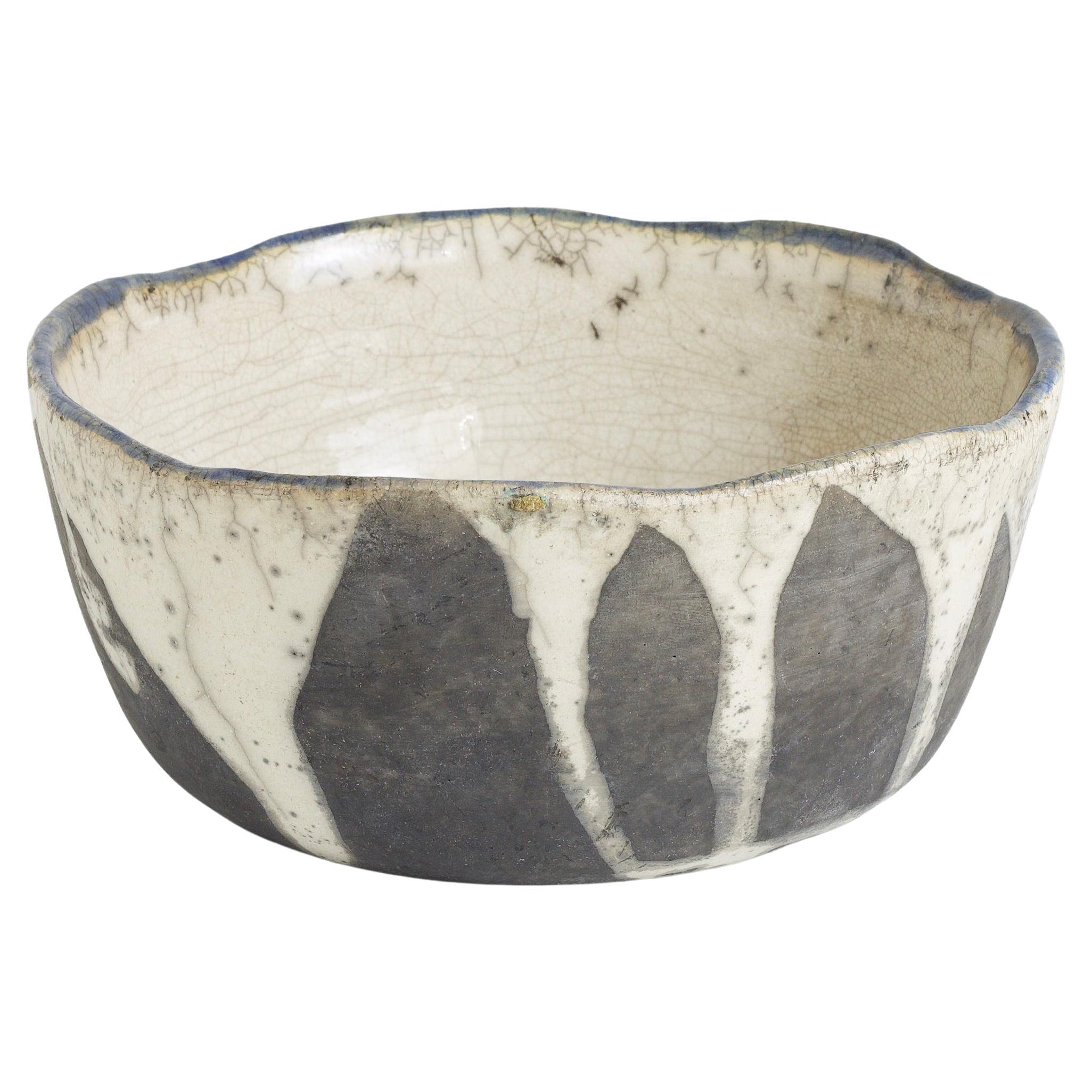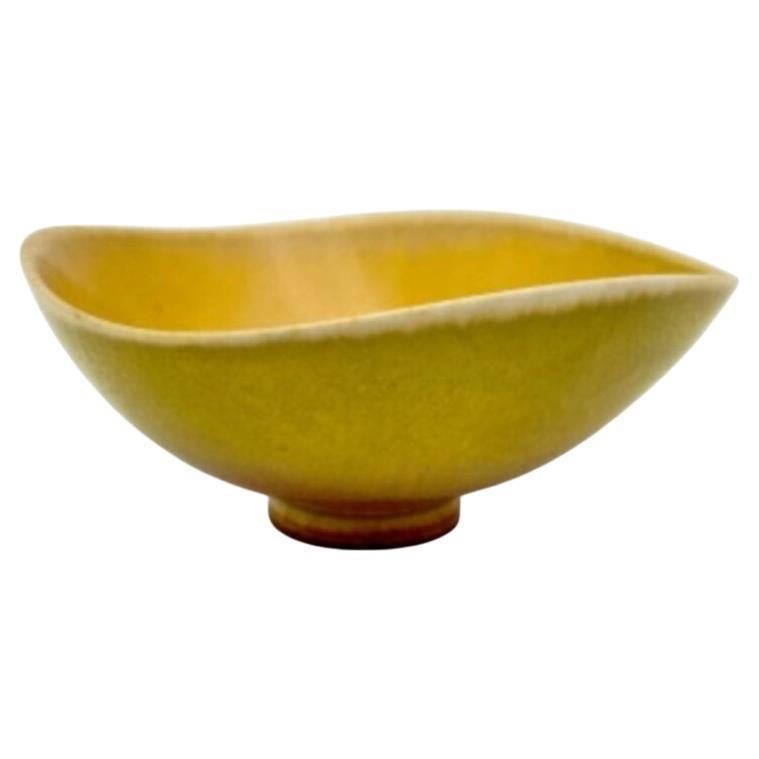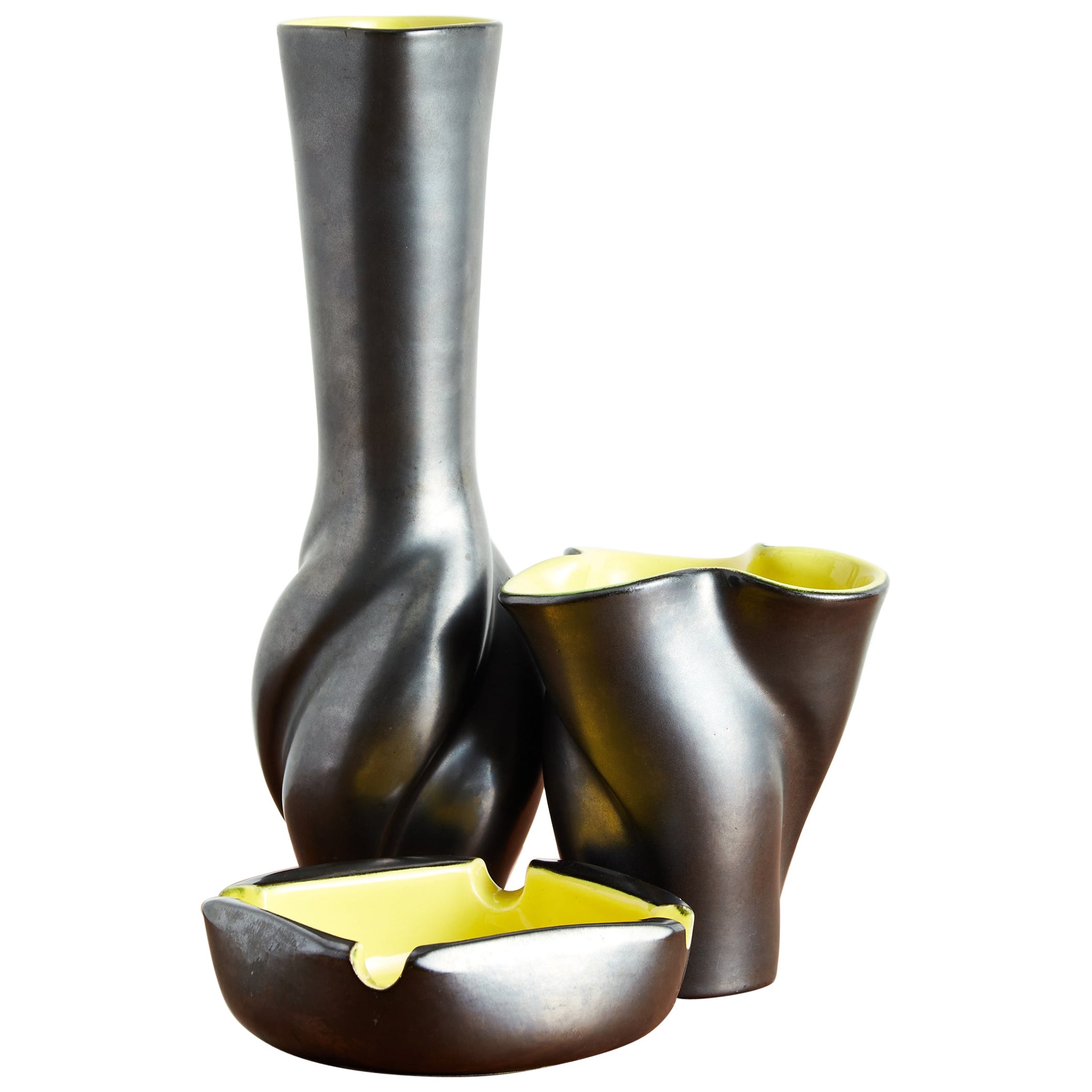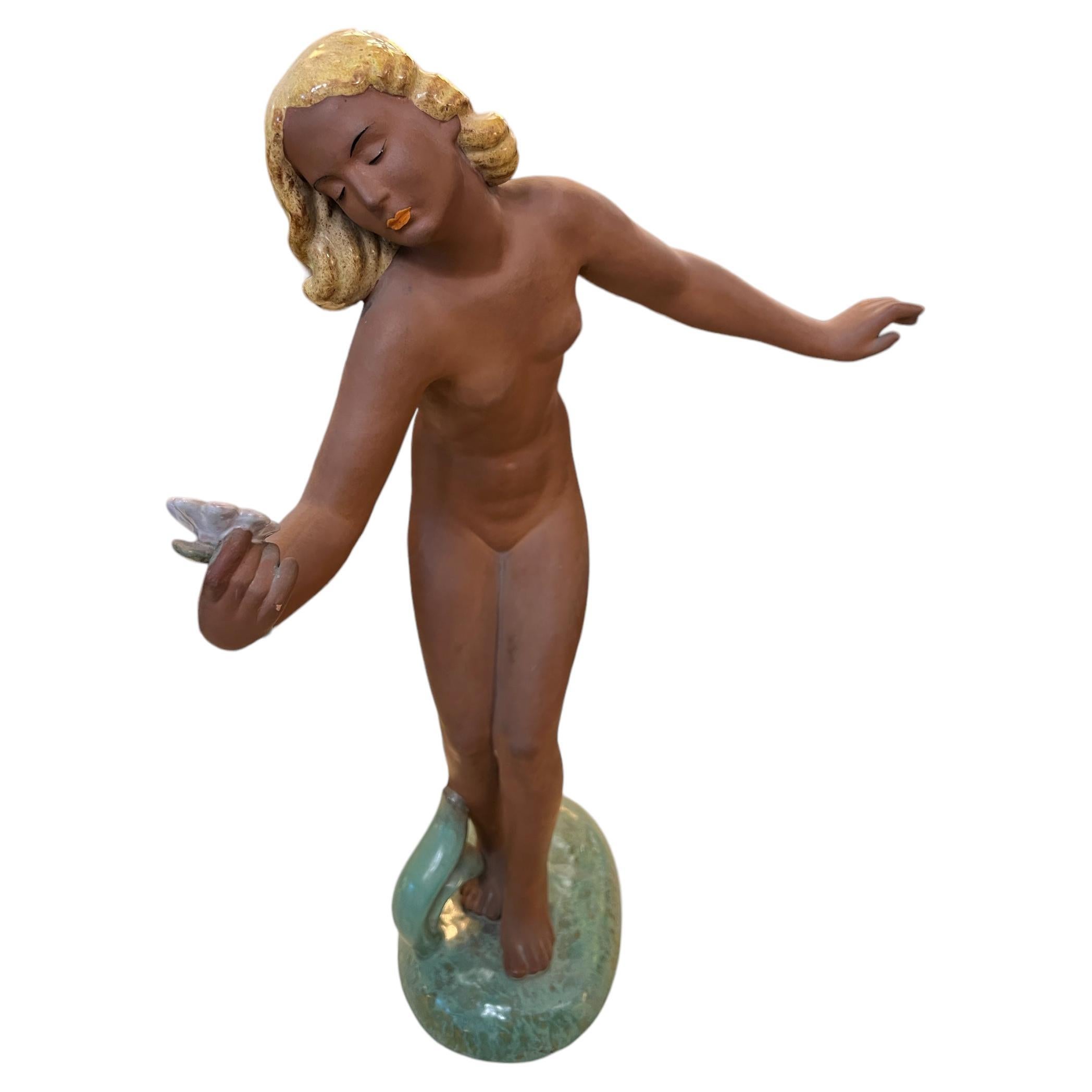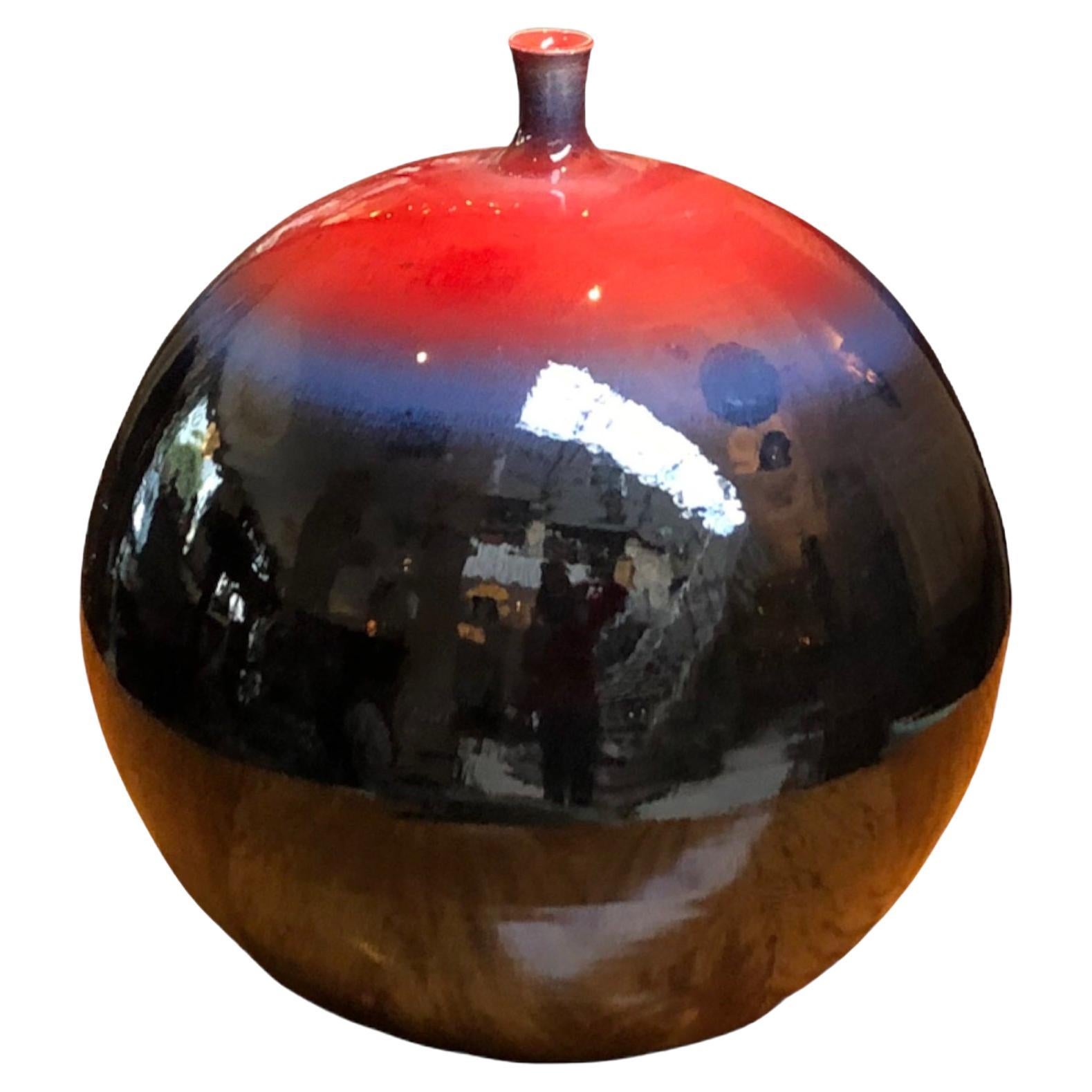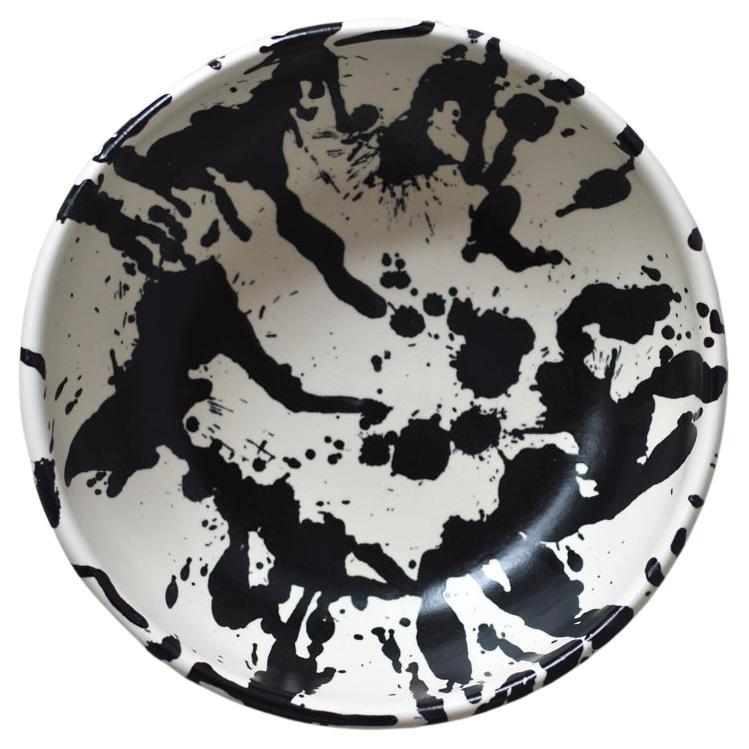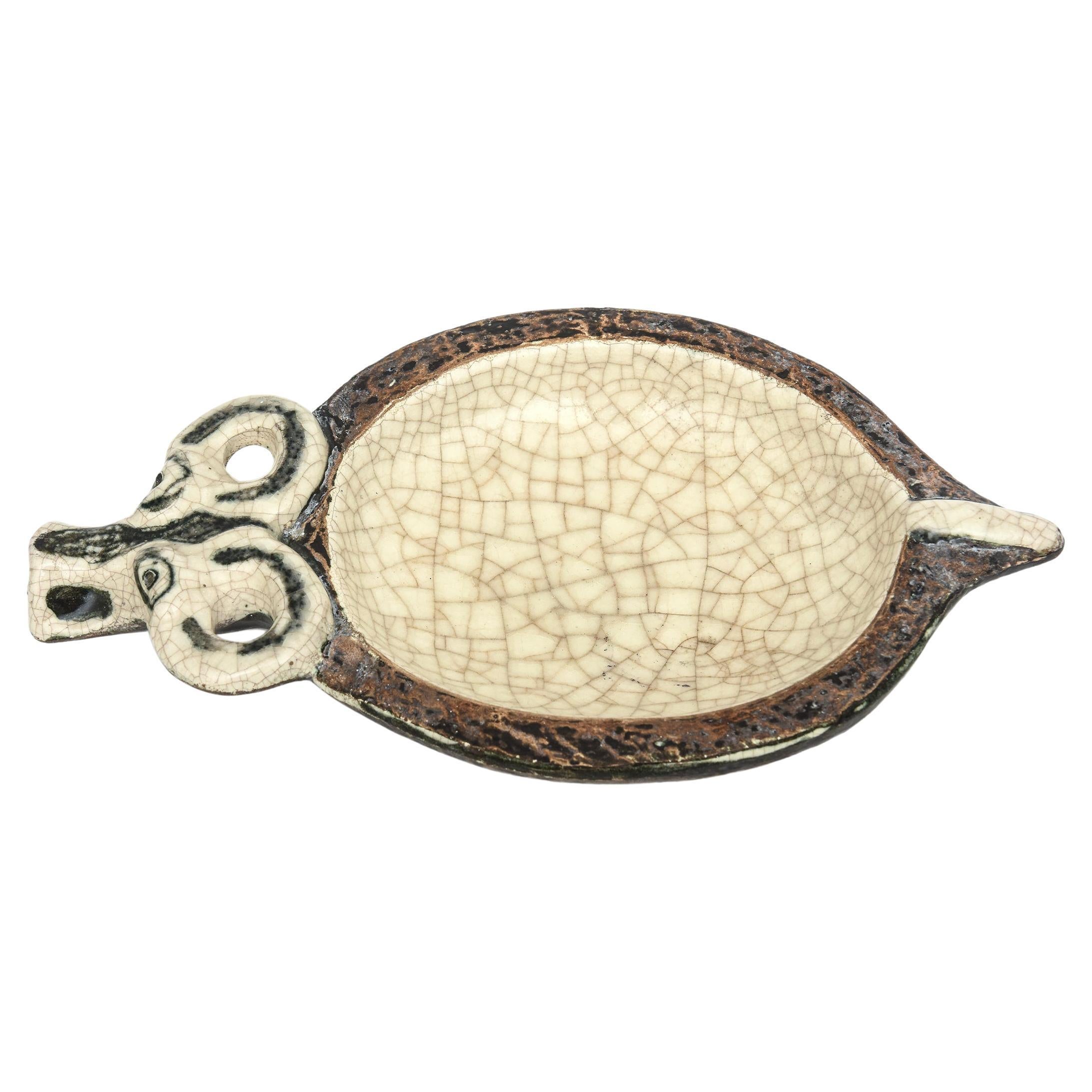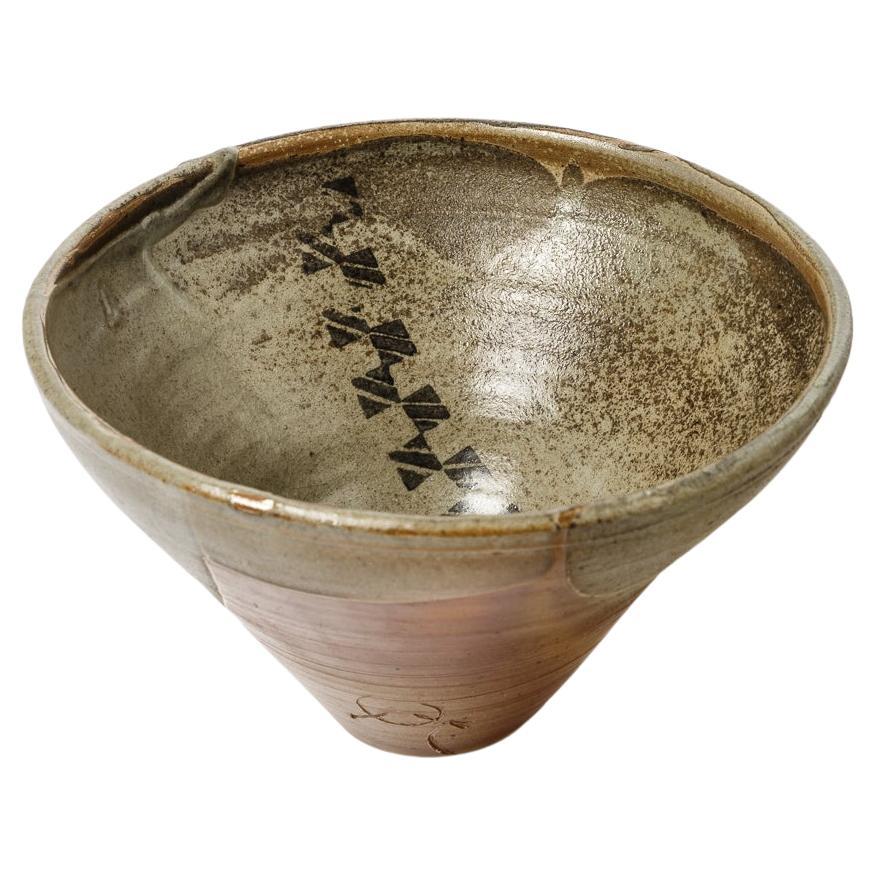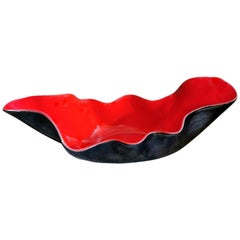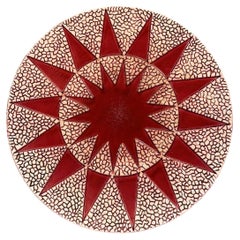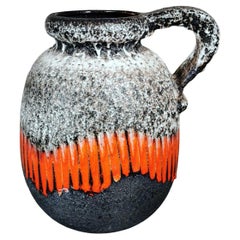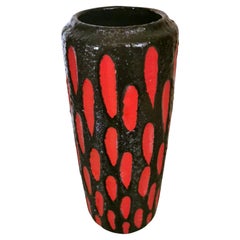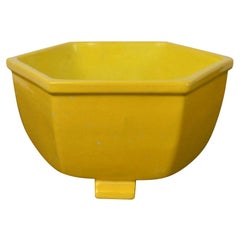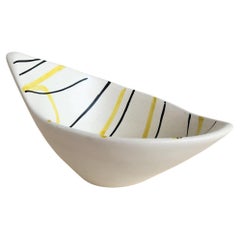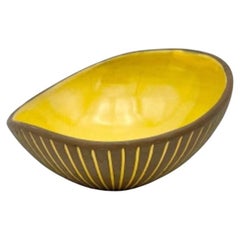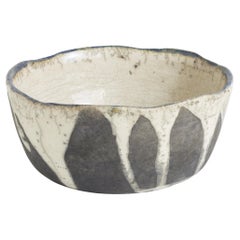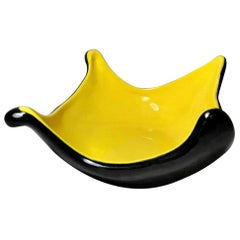
Rockabilly Style Bowl Yellow and Black Ceramic, 1952
View Similar Items
Want more images or videos?
Request additional images or videos from the seller
1 of 10
Rockabilly Style Bowl Yellow and Black Ceramic, 1952
$247.51List Price
About the Item
About the Seller
5.0
Platinum Seller
Premium sellers with a 4.7+ rating and 24-hour response times
Established in 1977
1stDibs seller since 2019
285 sales on 1stDibs
Authenticity Guarantee
In the unlikely event there’s an issue with an item’s authenticity, contact us within 1 year for a full refund. DetailsMoney-Back Guarantee
If your item is not as described, is damaged in transit, or does not arrive, contact us within 7 days for a full refund. Details24-Hour Cancellation
You have a 24-hour grace period in which to reconsider your purchase, with no questions asked.Vetted Professional Sellers
Our world-class sellers must adhere to strict standards for service and quality, maintaining the integrity of our listings.Price-Match Guarantee
If you find that a seller listed the same item for a lower price elsewhere, we’ll match it.Trusted Global Delivery
Our best-in-class carrier network provides specialized shipping options worldwide, including custom delivery.More From This Seller
View AllRockabilly Style French Centrepiece Red and Black Ceramic
Located in Prato, Tuscany
We kindly suggest you read the whole description, because with it we try to give you detailed technical and historical information to guarantee the authenticity of our objects.
Red and black ceramic table centerpiece made in Rockabilly style, the colors are strong and decisive, the black has the distinction of having beautiful reflections nacreè (mother of pearl), reflections that unfortunately the photos can not capture, from life are really seductive, the form is nicely undulating, pleasant and very capacious; the centerpiece was produced between 1950 and 1953, by skilled artisans in the area of Vallauris, the "French city of ceramics" in Provence north-east of Cannes, renowned since ancient times for the production of this fascinating material; there were more than 250 production centers, but today very few remain and since the mid-20th century, they are dedicated to the manufacture of contemporary ceramics. The word "Rockabilly" is a combination of "rock and roll" and "hillbilly" (a derogatory term used to define the Appalachian mountain people and, in a generic sense, meant country boor); Rockabilly was a musical genre developed in the early 1950s, it was one of the first forms of rock & roll. It was a fusion of bluegrass, country, boogie-woogie, and jazz, originally from the southern United States, and was played and sung by artists such as Buddy Holly...
Category
Mid-20th Century French Modern Ceramics
Materials
Ceramic
Art Deco Low French Glazed Ceramic Bowl Saint Clément Style
By Saint-Clément
Located in Prato, Tuscany
Please read the entire description carefully, as we strive to provide detailed technical and historical information to ensure the authenticity of our items.
This distinctive and intr...
Category
Mid-20th Century French Art Deco Ceramics
Materials
Ceramic
Fat Lava Style German Colored and Glazed Ceramic Pitcher with Handle
Located in Prato, Tuscany
We kindly suggest you read the whole description, because with it we try to give you detailed technical and historical information to guarantee the authenticity of our objects.
Parti...
Category
Late 20th Century German Mid-Century Modern Ceramics
Materials
Ceramic
Fat Lava Style German Colored Ceramic Glazed Vase
Located in Prato, Tuscany
We kindly suggest you read the whole description, because with it we try to give you detailed technical and historical information to guarantee the authenticity of our objects.
Particular and original German ceramic vase colored with a beautiful shade of red and a dark and vivid black; it has a simple shape but at the same time innovative and modernist; the beautiful and bright colors are balanced and proportioned respecting a minimalist design; the glazing of the vase was obtained by first laying down one color, proceeding to fix it by firing it in the kiln, then the same procedure was carried out for the other color; on the bottom is the mark "W. Germany"; it was produced between 1968 and 1971 in a craft workshop in the city of Dresden (then in East Germany), an important center for the production of porcelain and ceramics. "Fat lava" is the name given to a certain style of East German art...
Category
Late 20th Century German Brutalist Vases
Materials
Ceramic
Fat Lava Brutalist Style Hungarian Colored Ceramic Glazed Vase
Located in Prato, Tuscany
We kindly suggest you read the whole description, because with it we try to give you detailed technical and historical information to guarantee the authenticity of our objects.
Pecul...
Category
Mid-20th Century Hungarian Brutalist Ceramics
Materials
Ceramic
$424 Sale Price
20% Off
Fat Lava German Colored And Glazed Ceramic Pitcher
Located in Prato, Tuscany
We kindly suggest you read the whole description, as with it we try to give you detailed technical and historical information to guarantee the authenticity of our objects.
Peculiar and original German ceramic jug colored with a beautiful shade of red, black, and a vivid orange; it has a simple shape but at the same time innovative and modernist; the beautiful and vivid colors are balanced and proportioned respecting a minimalist design; the glazing of the jar was obtained by first laying down one color, proceeding to fix it by firing it in a kiln, then the same procedure was performed for the other colors; on the bottom bears the traditional mark found on this type of object, indicating that the object was created in a limited series with the jug number and the model number; unfortunately, on our jug this mark is barely legible, but it exists and allows us to say that this object was produced between 1968 and 1971 in a craft workshop in the city of Dresden (then in East Germany), an important center of porcelain and ceramic production. "Fat lava" is the name given to a certain style of East German art...
Category
Late 20th Century German Mid-Century Modern Ceramics
Materials
Ceramic
You May Also Like
Antique Yellow Ceramic Bowl in Chinese Style
By Bretby Ceramics
Located in St Annes, Lancashire
Super art pottery bowl in Chinese style.
Wonderful simplicity and color.
Factory mark of Bretby, England on the underside.
Free shipping
Category
Antique 1890s English Chinese Export Ceramics
Materials
Pottery
Roger Capron - Slanted Vintage Ceramic Bowl with Yellow and Black Lines
By Roger Capron
Located in Stratford, CT
Slanted Vintage Ceramic Bowl with Yellow and Black Lines by Roger Capron - Vallauris, France
Roger Capron was in influential French ceramicist, known fo...
Category
Vintage 1960s French Mid-Century Modern Ceramics
Materials
Ceramic
Yellow Ceramic Bowl by Hjördis Oldfors
By Hjordis Oldfors
Located in Atlanta, GA
One of ten earthenware bowl and vase designs, the ‘Kokos’, or Coconut, series was only produced in 1954. This piece is one of a sought after design by the innovative and renowned Swe...
Category
Vintage 1950s Swedish Ceramics
Materials
Ceramic, Earthenware
Japanese Tanoa Large Bowl Raku White and Black Ceramic
By LAAB Milano
Located in monza, Monza and Brianza
Tanoa is a large bowl, designed with simplicity and masterful skill of the raku firing technique expressing the master artisan will in its white crackle drippings and black burn clay...
Category
21st Century and Contemporary Italian Modern Ceramics
Materials
Ceramic
Yellow Glazed Ceramic Bowl by Berndt Friberg
By Berndt Friberg
Located in Atlanta, GA
Berndt Friberg was born in 1899 in Hoganas, Sweden. He began working in a ceramic factory in his hometown at the at the young age of 13 years old. Being an artist was a legacy, and h...
Category
Vintage 1930s Swedish Ceramics
Materials
Ceramic, Earthenware
Black and Yellow Ceramic - 3 pc set
By Elchinger
Located in Beverly Hills, CA
Set of 3 ceramic pieces by Elchinger (signed) with black and bright mustard yellow interiors
Great shapes and condition
France, 1950s
Priced as a set
Tall vase 13.25" H x 4" Diam...
Category
Vintage 1950s French Ceramics
Materials
Ceramic
Recently Viewed
View AllMore Ways To Browse
Buddy Lee
Glass Chicken
Large Ceramic Chargers
Wedgwood Rare
Antique Majolica Dish
Antique Masons Ironstone China
French Ceramic Fruit
Masons Orange
18th C Chinese Plate
Animal Ceramics
Mason's Ironstone On Sale
Ceramic Face Plate
Lisa Larson Sweden
Vintage Ceramic Mugs
Ceramic Trees
Majolica Green Leaf
Masons Patent Ironstone
Rose Canton Porcelain
